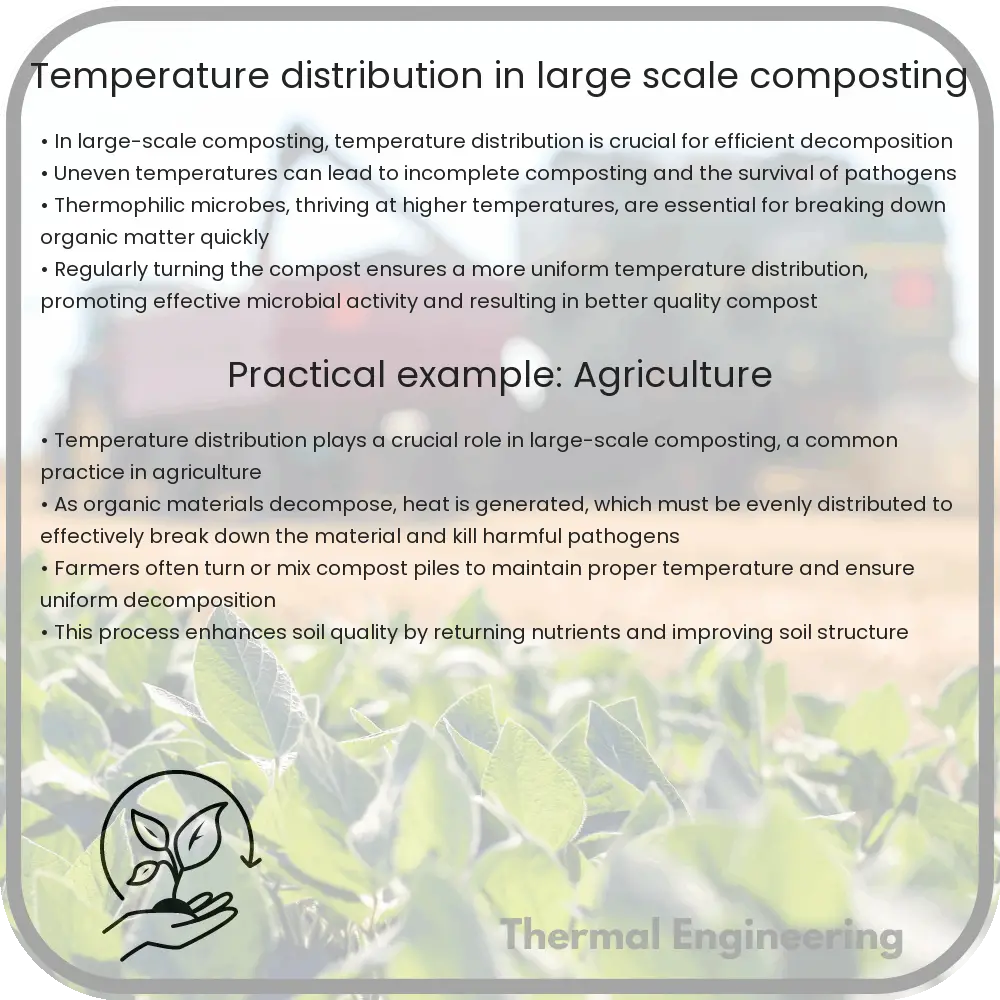Learn how temperature distribution impacts large-scale composting, affecting decomposition rates and compost quality.

Understanding Temperature Distribution in Large-Scale Composting
Large-scale composting is an essential process for converting organic waste into valuable soil amendments. One of the critical factors influencing the efficiency of composting and the quality of the final product is the temperature distribution within the compost pile. This article explores the factors that affect temperature distribution, its impact on decomposition rates, and strategies for optimal temperature management.
Factors Affecting Temperature Distribution
Temperature distribution in a compost pile is influenced by several interconnected factors:
- Aeration: Oxygen supply affects microbial activity. Proper aeration helps maintain aerobic conditions, fostering thermophilic activity that increases temperature.
- Moisture Content: Moisture is crucial for microbial survival but excess water can lead to anaerobic conditions, reducing heat generation.
- Particle Size: Smaller particles increase the surface area for microbes but can compact, impeding airflow and heat transfer.
- Carbon to Nitrogen Ratio (C:N): An optimal C:N ratio (about 30:1) is vital for sustaining microbial activity and heat production.
Thermal Dynamics in Composting
Composting generates heat through the metabolic processes of microorganisms that decompose organic matter. The temperature of a compost pile typically passes through several phases:
- Mesophilic phase: This initial phase occurs as microorganisms begin to break down readily decomposable materials, causing the pile temperature to rise to about 20-45°C.
- Thermophilic phase: Temperatures can soar to between 45-75°C, enhancing the decomposition of more complex materials like proteins and fats.
- Cooling and maturation phases: As the availability of decomposable material decreases, temperatures gradually fall, allowing for the colonization of fungi and actinobacteria that further break down fibrous materials.
The spatial temperature distribution within the compost pile can be highly variable, influenced by external ambient conditions, pile insulation, and internal biochemical activity. Hotspots, where temperatures are significantly higher than the surrounding material, are common and can lead to uneven compost maturation.
Monitoring and Managing Temperature
Effective management of temperature distribution in a compost pile involves:
- Regular Temperature Monitoring: Using temperature probes at various depths and locations to gather data on the internal conditions of the pile.
- Turning the Pile: Mechanical turning helps redistribute heat and moisture throughout the pile, homogenizing the microbial habitat.
- Moisture Adjustment: Adding water or dry matter to balance the moisture content, ensuring optimal microbial activity and heat production.
- Ventilation: Enhancing airflow through manual or mechanized aeration to support aerobic decomposition and prevent overheating.
Thermal imaging and computational models are also employed to visualize and predict heat distribution, offering a more detailed analysis that can guide composting operations.
Concluding Thoughts
Temperature control and monitoring play pivotal roles in maximizing the efficiency and outcome of large-scale composting operations. Understanding and managing the complex thermal dynamics of compost piles not only aids in producing higher quality compost but also in ensuring environmental compliance and sustainability. By fine-tuning these parameters, operators can greatly improve the degradation process, turning organic waste into a resource rather than a liability.
Overall, the study and optimization of temperature distribution within composting setups serve as a cornerstone for advancing waste management practices and enriching soil health globally.